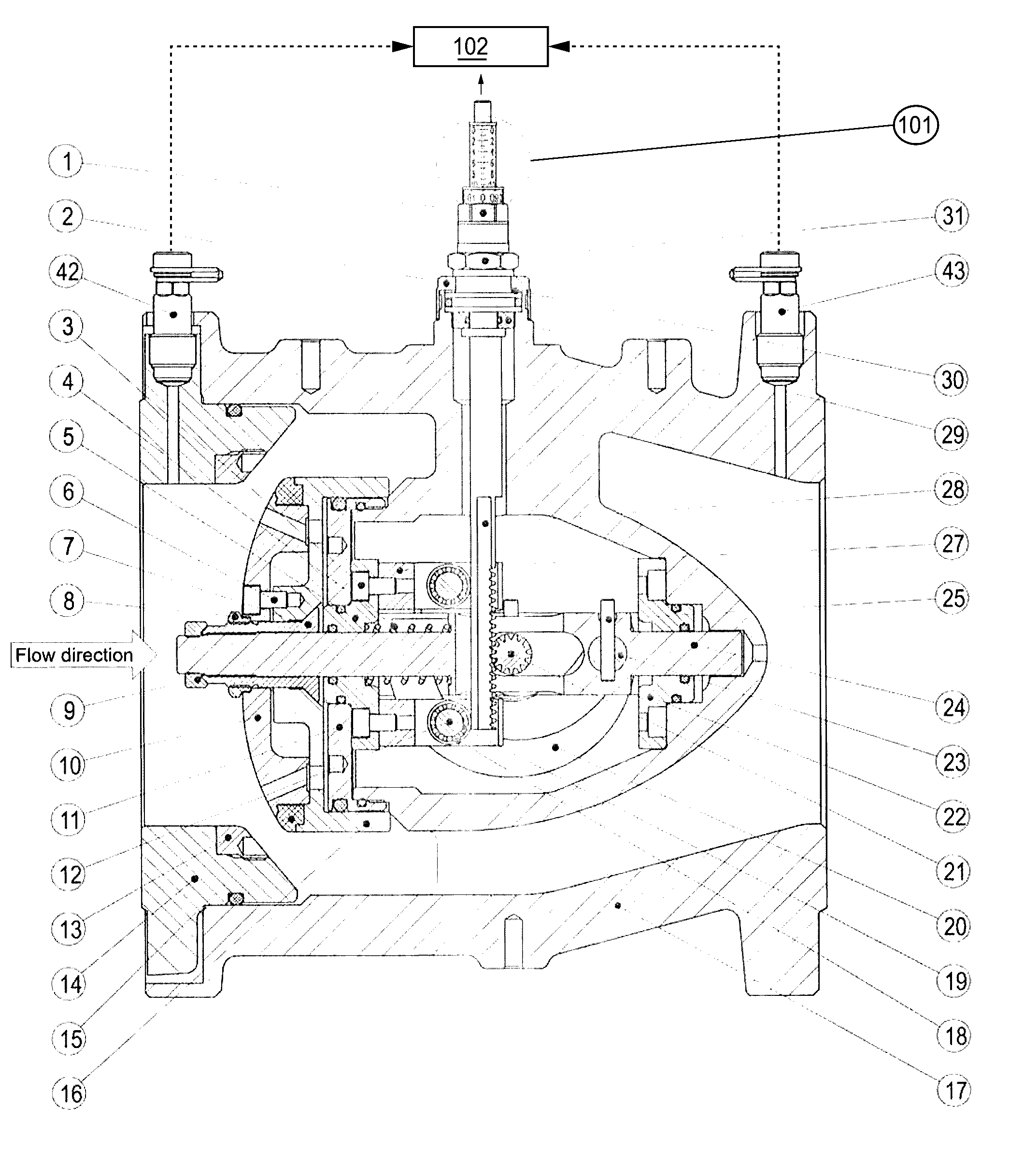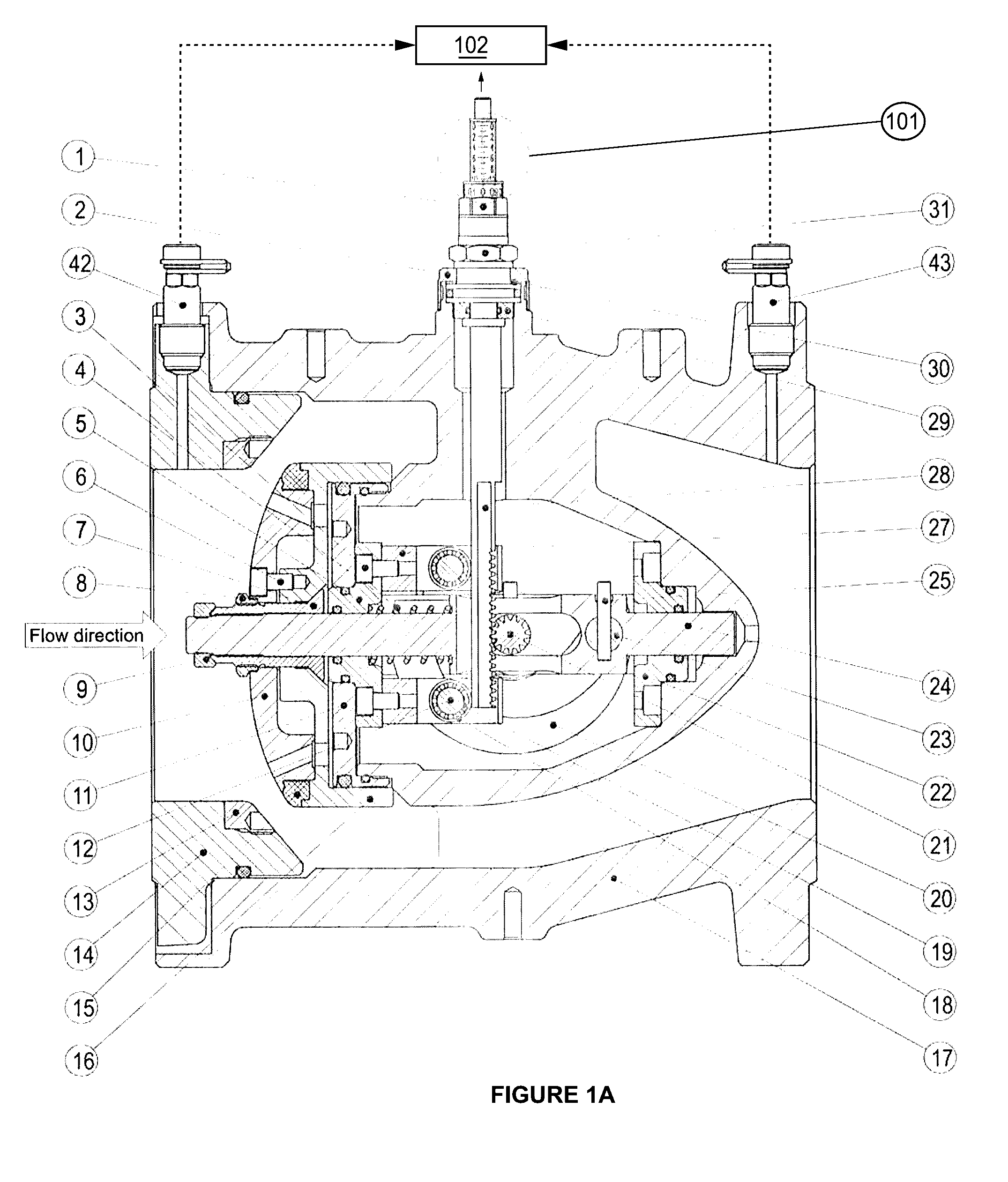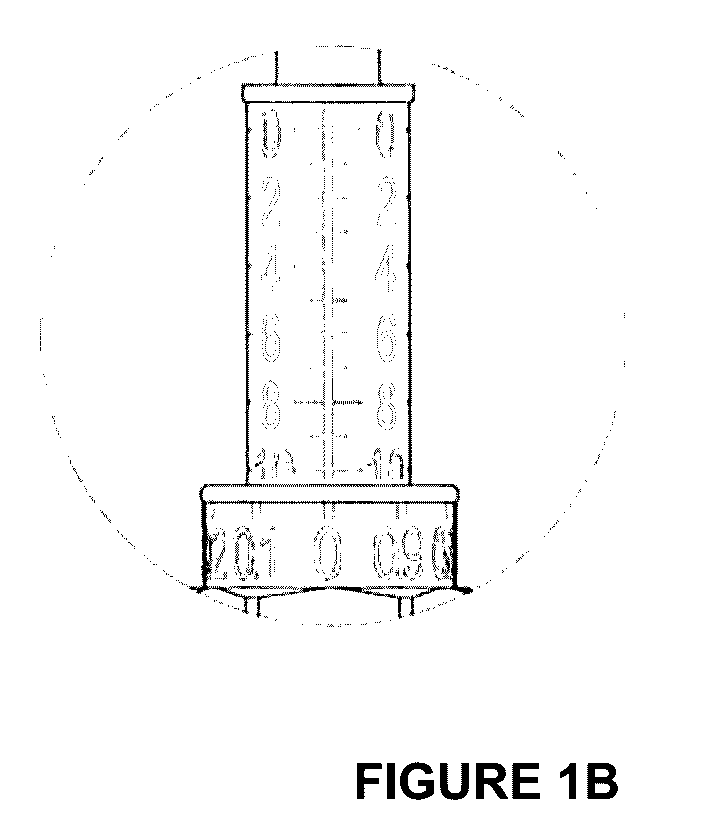Balancing and control valves
a technology of control valves and balancing valves, applied in the direction of valve operating means/releasing devices, functional valve types, service pipe systems, etc., can solve the problems of unsatisfactory fluid conductance, inability to control, and excessive pumping energy required to address unnecessary pressure, so as to reduce noise, reduce turbulence, and facilitate fluid conductance change
- Summary
- Abstract
- Description
- Claims
- Application Information
AI Technical Summary
Benefits of technology
Problems solved by technology
Method used
Image
Examples
Embodiment Construction
[0027]The valve of FIG. 1A generally comprises a housing (14, 17) which defines a chamber in which is provided a plug assembly (6, 10, 15, 16) and a seat (13) in axial alignment along the direction of flow of fluid in hydronic system. The plug (6, 10, 15, 16) is carried on a shaft (24) whose axis passes through the centre of the plug (6, 10, 15, 16). The shaft (24) also carries a cam follower assembly (23, 25). A calibration means is provided in the form of assembly (1, 2, 29, 30 and 31) which interacts with a rod (28) which passes through a sealed inlet chamber which is free to slide axially by means of a bearing mounted in the inlet. The rod is adapted to connect to an electromechanical or other controlled drive means (45 in FIG. 4). The calibrated stroke limiting mechanism (1, 2, 28, 29, 30, 31) is provided to adjust the maximum opening of the valve during a balancing procedure.
[0028]The rod (28) extends into the chamber in a direction perpendicular to the motion of the plug and ...
PUM
 Login to View More
Login to View More Abstract
Description
Claims
Application Information
 Login to View More
Login to View More - R&D
- Intellectual Property
- Life Sciences
- Materials
- Tech Scout
- Unparalleled Data Quality
- Higher Quality Content
- 60% Fewer Hallucinations
Browse by: Latest US Patents, China's latest patents, Technical Efficacy Thesaurus, Application Domain, Technology Topic, Popular Technical Reports.
© 2025 PatSnap. All rights reserved.Legal|Privacy policy|Modern Slavery Act Transparency Statement|Sitemap|About US| Contact US: help@patsnap.com



